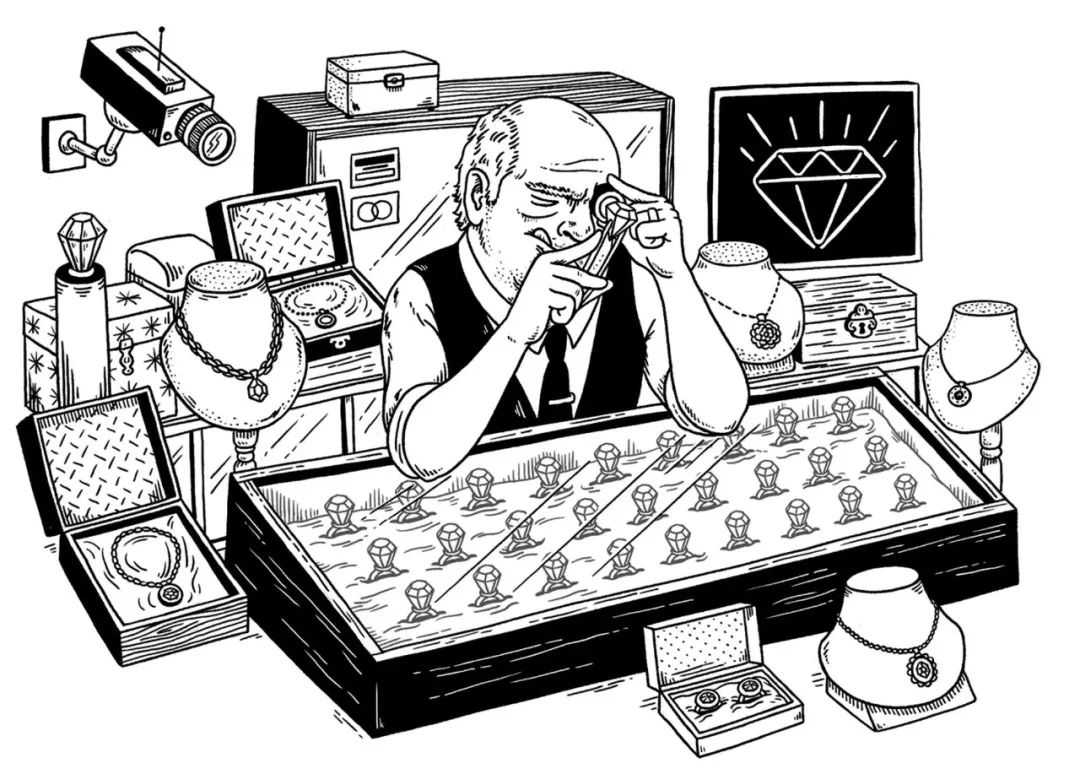The English name for consignment is "commitment", also known as "memo" (meaning "memorandum sales"). Its use in the diamond jewelry industry is very common, and some even believe that India has rapidly expanded the global natural bare diamond market through consignment.
In short, consignment refers to suppliers allowing their customers (usually consignment traders or retailers) to hold the products they provide for a certain period of time, and then settling payments and returning or exchanging goods based on the actual sales results.
As early as 2002, Rapaport had a review article on consignment models, which clearly explained the applicability of consignment in the natural diamond and jewelry industry, especially in the retail community. Nathaniel Earle, then chairman of the Jewelry Trade Commission (JBT), believed that consignment was essentially free financing for retailers.
In April 2015, the New York Times published a special article that extensively mentioned the consignment model and believed that even with the rapid development of online trade, consignment is one of the core models of diamond and jewelry trade, as retailers need to evaluate every expensive product.
Of course, the above article also openly mentions the cost of consignment, such as retailers needing to pay a certain deposit and a premium of about 5% -10% when settling payments. However, this model is generally more friendly to distributors and retailers, allowing them to manage their inventory and cash flow well. Compared to buying out directly, some merchants will choose consignment sales.
The pressure of consignment is mostly on suppliers, who need to bear risks such as roll cargo escape, fraud, unauthorized exchange, multi-layer consignment, and customer bankruptcy. For the details of this section, you can refer to a 2021 article by Logan Moore titled 4Risks of Using a JewelryMemo, which will not be elaborated here.

However, despite the risks involved, many suppliers are still willing to use consignment to expand their market share, and in some cases, suppliers can only operate through consignment. For example, in times of high market and price fluctuations, some retailers are unwilling to stock up on their own, so if the previous home does not adopt a consignment model, they may not even consider cooperation.
A recent example is the data mentioned by Tenoris in the February market report:
In February 2023, more than 20% of the natural naked diamonds held by professional American jeweler were obtained through consignment. The average proportion of consignment sales in 2022 was 17.8%.
The situation of cultivating diamonds is similar. Among the cultivated bare diamonds held by the same group mentioned above, the consignment rate in February was around 21%.
Therefore, it can be seen that in the current environment of high wholesale price fluctuations and market uncertainty, retailers are very cautious about their inventory management (which is consistent with the previous Rapport monthly report content), so some suppliers are "forced" to adopt consignment mode cooperation.
So is the consignment model a good thing for cultivating the diamond industry?
On October 1, 2021, the online publication JewelerMagazine published a review article titled Arabella Roden, expressing some views on the development status of cultivating diamonds at that time. The article quotes a quote from renowned analyst Edahn Golan:
Many products are supplied through consignment, and there is a fierce competition among wholesalers.

Of course, the achievement of consignment needs to be based on careful consideration, otherwise some merchants will take advantage of legal loopholes, some retailers will "not attach much importance" to products obtained through consignment mode, and so on. These phenomena have also occurred multiple times in the diamond industry (and are still occurring), so suppliers are also cautious in reviewing consignment customers.
Is there a consignment model for cultivating the diamond industry in China? There must be, but the current scale is still limited. In the future, when a large number of retailers appear in the Chinese market, the consignment model may play an important role, just like in the natural diamond industry, providing some merchants with the courage to try new products.
